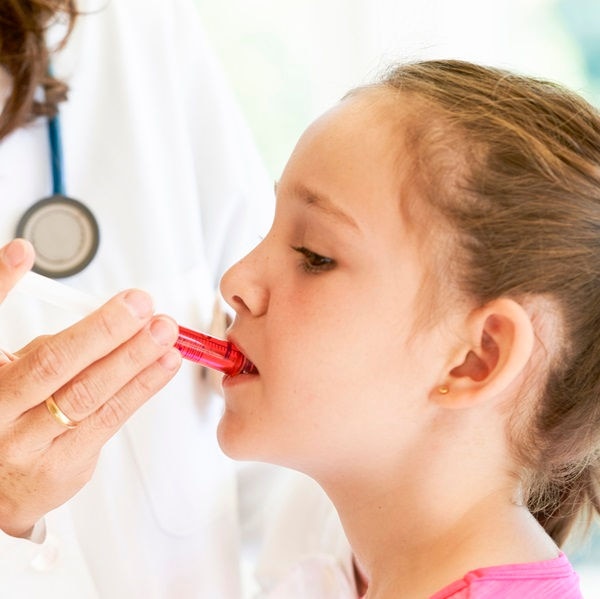News
September 13, 2023
World Patient Safety Day 2023
Discover how dsm-firmenich is turning insights into innovation this World Patient Safety Day, from nitrosamine risk mitigation to cannabinoid-based therapeutics.

Summary
- Ensuring patients have access to safe healthcare is a human right, yet harm from unsafe practices in primary and outpatient care is a common occurrence worldwide.1
- This year’s World Patient Safety Day, September 17th, is focused on raising global awareness and engagement, improving global understanding and engaging stakeholders to enhance patient safety and reduce harm.
- Read on to find out what it means to elevate the voice of patients and explore how dsm-firmenich is focusing on patient safety, from nitrosamine risk mitigation to cannabinoid-based drug enhancement.
Making safe healthcare a priority
Safe healthcare is a fundamental human right for all patients worldwide. Yet, there is still significant room for improvement to make this right a reality – given unsafe healthcare is one of the leading causes of death and disability worldwide.2 Some reports estimate that as many as four out of ten patients are harmed in primary and ambulatory care from issues relating to diagnostic, prescription and medication errors.1 However, it was also determined that up to 80% of this harm is preventable.1
Medical settings can be challenging and high-pressure environments, where human error is unavoidable. However, enhancing the workplace environment by creating a culture that values shared safety beliefs, attitudes and values can make a real difference. Beyond hospitals, the pharmaceutical industry also bears responsibility for improving patient safety. Pharmaceuticals are the bedrock of healthcare and drug manufacturers have a legal obligation to ensure every drug is manufactured to the highest quality and level of safety – putting the patient first.
World Patient Safety Day 2023
World Patient Safety Day is one of the World Health Organizations (WHO) global public health days, established in 2019 by the World Health Assembly to enhance patient safety and reduce patient harm. This year’s World Patient Safety Day, September 17th, is focused on elevating the voice of those with first-hand experience of the health care system – patients. This strategy holds huge potential as it has been previously demonstrated that engaging patients to advance safety in health care was able to reduce the burden of harm by up to 15%, saving countless lives and billions of dollars.1
The objective of the day is to encourage collaboration among stakeholders, including patients, families, policymakers, health care leaders, medical professionals and patient organizations, to create policies that truly align with patients’ needs and requirements, ultimately enhancing health care safety on a global scale.
dsm-firmenich’s commitment to patient safety and care
As an industry-leading partner in the pharmaceutical space, we are committed to helping our customers develop patient-centric solutions that improve the healthcare experience and reduce the risk of harm. Backed by more than 150 years of purpose-led, scientific discovery, we are paving the way forward to bring progress to life, every day, everywhere, for billions of people. Wondering how? Here are two examples of how we turn science into patient-centric solutions:
1. Inspiring patient-centric cannabinoid-based therapeutics
The cannabinoid market is evolving, powered by promising scientific findings demonstrating the therapeutic potential of cannabinoid ingredients - especially cannabidiol (CBD) - across numerous health areas, including pain management, stress and anxiety. However, unlocking the full potential of CBD is challenging due to the molecule’s variable bioavailability.
Only 6% of CBD is absorbed into the circulation after oral administration due to the molecules highly lipophilic nature and limited solubility in water – leading to incomplete adsorption through the intestinal wall.3 The molecule is also subject to first pass metabolism in the liver – whereby the concentration of the drug is greatly reduced before it reaches systemic circulation, and the desired site of action. Therefore, to achieve a positive therapeutic outcome, higher doses of the active pharmaceutical ingredient (API) are required – which could potentially cause unwanted side effects.
To create a truly patient-centric therapy without compromising on effectiveness, we are developing a CBD-based solid dosage form with significantly higher drug loading versus current market authorized products, good physical and chemical stability and an optimal pharmacokinetic performance. This will allow brands to develop effective and convenient-to-take CBD-based medicines. Our team of expert scientists have been exploring and benchmarking a number of different drug delivery technologies to identify the best approach for enhanced CBD bioavailability. So far, our in-vivo pre-clinical research has already delivered promising results, as we have identified drug delivery technologies that are superior to current leading liquid formulations, pushing us towards clinical assessment and eventual commercial development.
2. Mitigating nitrosamine risk for pharmaceuticals
Nitrosamines are chemicals that can be harmful to human health, as they are possible carcinogens.4 In 2018, nitrosamine impurities were detected in common drug products prescribed for high blood pressure (valsartan), type 2 diabetes (metformin) and heartburn (ranitidine). Since then, more recent figures predict the risk of drug product contamination is more common than previously thought, with ~ 40% of API and ~30% of API impurities being classified as potential nitrosamine precursors.5 Patient safety is at the forefront of manufacturers‘ minds, and therefore, finding a suitable approach to mitigate nitrosamine risk is paramount.
At dsm-firmenich, we can help customers find a suitable approach to mitigate nitrosamine risk and develop safer formulations. We offer a viable, FDA-recommended nitrosamine risk mitigation strategy with high-quality antioxidant ingredients. These are naturally occurring compounds that possess the power to effectively block the formation of nitrosamines.6 Our antioxidant excipients, including ascorbic acid (vitamin C) and alpha-tocopherol (vitamin E), are high-quality pharma grade and have a well-characterized profile that includes long-term safety and pharmacokinetic absorption, distribution, metabolism and excretion (ADME) data. We can also perform ‘proof of concept’ lab scale trials to identify the most suitable level of antioxidant needed for specific drug formulations.
As an innovation partner in the pharmaceutical space, we’re dedicated to helping customers overcome even the most complex formulation challenges to deliver next generation solutions of the highest quality and level of safety.
Let's talk
Interested in leveraging our innovative solutions to bring safe, patient-centric drug products to market?
References
1 Slawomirski L, Auraaen A, Klazinga N. The Economics of Patient Safety in Primary and Ambulatory Care: Flying blind. Paris: OECD; 2018 (http://www.oecd.org/health/health-systems/The-Economics-of-Patient-Safety-in-Primary-and-Ambulatory-Care-April2018.pdf, accessed 23 Aug 2023).
2 Jha AK. Presentation at the “Patient Safety – A Grand Challenge for Healthcare Professionals and Policymakers Alike” a Roundtable at the Grand Challenges Meeting of the Bill & Melinda Gates Foundation, 18 October 2018
3 Perucca & Bialer. Critical aspects affecting cannabidiol oral bioavailability and metabolic elimination, and related clinical implications. Cannabinoids in Neurology and Psychiatry, vol. 34, pg. 795-800, (2020).
4 FDA. Nitrosamines as impurities in drugs; health risk assessment and mitigation workshop day 1. [PDF], accessed 1 April 2022.
5 Schlingemann J, et al. The Landscape of Potential Small and Drug Substance Related Nitrosamines in Pharmaceuticals. J Pharm Sci. 17:S0022-3549(22)00525-1 (2022).
6 Pham-Huy LA, He H, Pham-Huy C. Free radicals, antioxidants in disease and health. Int J Biomed Sci. 4(2):89-96 (2008).
Related Content
Recommended Reading
-

2 April 2025
The gut microbiome as a pathway to supporting children with autism: New study reveals synbiotics' dual benefits for digestive and behavioral symptoms
-

31 March 2025
Turn the tide against global malnutrition: The importance of cross-sector collaboration
-

24 March 2025
Introducing dsm-firmenich’s new portfolio of taste solutions for pharmaceutical formulations
Quick links
Customized blends of functional ingredients in one single, efficient premix.
Streamline your product development process and get to market faster.
From trade shows to conferences and other industry events, find out where you can meet us next.
Talking Nutrition, Health & Care
Explore new science, consumer insights, industry news and more in our latest articles.
Discover educational whitepapers, webinars, publications and technical information.
Request samples, place orders and view product documentation.